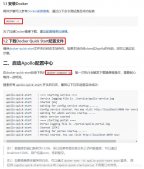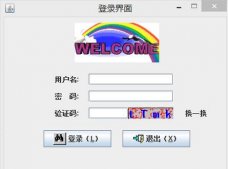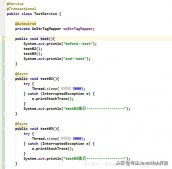
在Spring Boot中调用外部接口的方式有多种,其中最常用的是使用RestTemplate或者WebClient。以下是一种使用RestTemplate的示例,包含了详细的描述和实例源代码:
步骤 1: 添加依赖
确保在pom.xml文件中添加以下依赖,以引入Spring Boot的Web模块:
<dependency>
<groupId>org.springframework.boot</groupId>
<artifactId>spring-boot-starter-web</artifactId>
</dependency>
步骤 2: 创建RestTemplate Bean
在Spring Boot应用程序的配置类中,创建一个RestTemplate的Bean,以便能够注入到其他组件中。
import org.springframework.context.annotation.Bean;
import org.springframework.context.annotation.Configuration;
import org.springframework.web.client.RestTemplate;
@Configuration
public class AppConfig {
@Bean
public RestTemplate restTemplate() {
return new RestTemplate();
}
}
步骤 3: 使用RestTemplate调用外部接口
创建一个Service或Controller类,并注入RestTemplate,使用它来调用外部接口。
import org.springframework.beans.factory.annotation.Autowired;
import org.springframework.stereotype.Service;
import org.springframework.web.client.RestTemplate;
@Service
public class ExternalApiService {
private final String apiUrl = "https://api.example.com/data";
@Autowired
private RestTemplate restTemplate;
public String fetchDataFromExternalApi() {
// 发起GET请求,并获取响应
String response = restTemplate.getForObject(apiUrl, String.class);
// 处理响应,可以进行进一步的业务逻辑处理
return response;
}
}
总结:
- 添加依赖: 确保在pom.xml中引入spring-boot-starter-web依赖。
- 创建RestTemplate Bean: 在配置类中创建RestTemplate的Bean,以便注入到其他组件中。
- 使用RestTemplate调用外部接口: 在Service或Controller类中注入RestTemplate,并使用它来调用外部接口。在示例中,我们使用getForObject方法发起GET请求,获取响应。
请注意,最近的Spring版本中推荐使用WebClient作为替代方案,因为它提供了更灵活、响应式的方式来处理HTTP请求。以下是一个简单的使用WebClient的示例:
import org.springframework.stereotype.Service;
import org.springframework.web.reactive.function.client.WebClient;
@Service
public class ExternalApiService {
private final String apiUrl = "https://api.example.com/data";
private final WebClient webClient;
public ExternalApiService(WebClient.Builder webClientBuilder) {
this.webClient = webClientBuilder.baseUrl(apiUrl).build();
}
public String fetchDataFromExternalApi() {
// 发起GET请求,并获取响应
String response = webClient.get()
.retrieve()
.bodyToMono(String.class)
.block();
// 处理响应,可以进行进一步的业务逻辑处理
return response;
}
}
上述示例中,我们使用了WebClient.Builder来构建WebClient实例,然后使用链式调用发起GET请求。这种方式更加灵活,并且支持响应式编程。选择使用RestTemplate还是WebClient取决于个人偏好和项目需求。
原文地址:https://www.toutiao.com/article/7305646157165249078/
















